Skiing is a sport that combines the thrill of speed with the beauty of snowy landscapes. But before you hit the slopes, it's crucial to understand the equipment you're using. One of the most common questions among skiers, especially those new to the sport, is about the numbers printed on their skis. These numbers aren't random; they're key to selecting the right skis for your style, ability, and the terrain you'll be tackling.
Key Takeaways:
- The numbers on skis indicate dimensions, length, and turning radius, which are essential for ski performance.
- Understanding ski numbers helps in selecting the right ski for your skill level and preferred terrain.
- The numbers can also provide information about the ski's intended use, such as racing, freestyle, or all-mountain skiing.
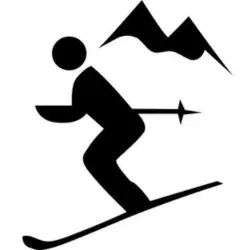
The Significance of Ski Numbers
When you look at a pair of skis, you'll notice a series of numbers that might seem cryptic at first glance. These figures are far from arbitrary; they are a coded guide to the ski's characteristics. The numbers on skis typically represent the dimensions of the ski in millimeters, specifically the tip, waist, and tail width. This trio of numbers, often referred to as the ski's "sidecut dimensions," is crucial in determining how the ski will perform on the snow.
For example, a ski with dimensions of 130-100-120 means the tip is 130mm wide, the waist is 100mm, and the tail is 120mm. Skis with a wider waist are generally better for powder, while those with a narrower waist are more suited for groomed runs.
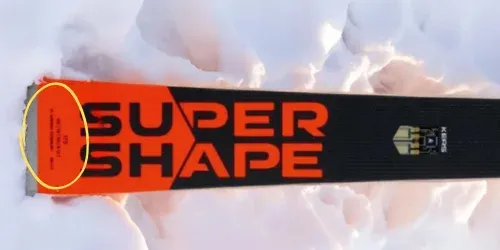
Length Matters: Ski Size Numbers
Another number you'll find on your skis is the length, which is typically measured in centimeters. Ski length is a vital factor in your control and stability on the slopes. Longer skis offer more stability at high speeds and are better for taller or more experienced skiers. Conversely, shorter skis are easier to maneuver and are often recommended for beginners or those who prefer a playful, agile ride.
The length of the ski will also affect its turning radius, which is the natural arc the ski will make when tilted on edge. A shorter ski will generally have a smaller turning radius, making it easier to turn quickly.
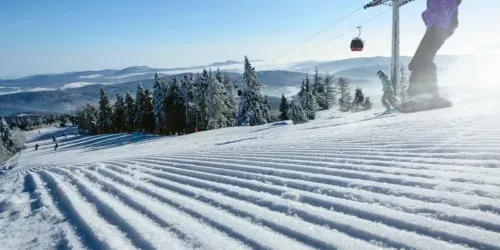
Turning Radius: The Curve Quotient
The turning radius of a ski is a number that tells you how tightly the ski can turn. It's usually measured in meters and can be found printed on the ski or in the manufacturer's specifications. A smaller turning radius indicates a ski that's built for quick, sharp turns, which is ideal for slalom racing or maneuvering through trees. On the other hand, a larger turning radius is better for giant slalom or super-G where longer, sweeping turns are the norm.
Understanding the turning radius can help you choose a ski that matches your skiing style. If you enjoy making lots of short, quick turns, look for a ski with a smaller turning radius. If you prefer long, fast runs, a ski with a larger turning radius may be more your speed.
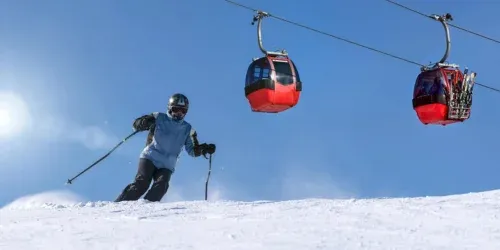
The Flex Factor: Stiffness and Flexibility
The flex of a ski refers to how flexible or stiff it is when pressure is applied. While this isn't always represented by a number on the ski itself, it's a critical aspect of a ski's performance. Stiffer skis are more stable at high speeds and better for aggressive skiers, while more flexible skis are easier to turn and more forgiving for beginners.
Manufacturers often rate the flex of their skis on a scale, with higher numbers indicating a stiffer ski. This information can usually be found in the product description or on the company's website.
Width Underfoot: The Waist Width
The waist width of a ski is the width of the ski at its narrowest point, usually right under the binding. This number is crucial for determining the ski's intended use. Narrower skis, with a waist width of less than 85mm, are typically designed for on-piste skiing. Mid-range widths, from 85mm to 105mm, are versatile and can handle a mix of groomed runs and off-piste conditions. Skis with a waist width over 105mm are considered powder skis, designed to float on top of deep snow.
Choosing the right waist width will depend on where you plan to ski most often. If you're sticking to groomed trails, a narrower ski is ideal. If you're dreaming of deep powder days, you'll want a wider ski.
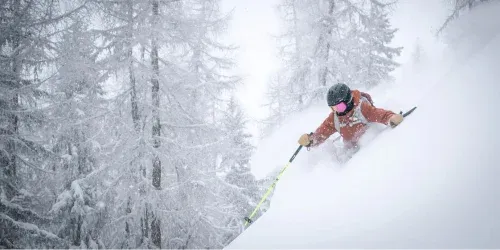
The Profile: Camber and Rocker
Skis can have different profiles, which affect how they interact with the snow. The two main types are camber and rocker. Camber refers to a ski's upward curve in the middle, while rocker (or reverse camber) means the ski turns up at the tips and sometimes the tail.
Cambered skis offer better edge grip and stability on hardpack, while rockered skis provide better float in powder and ease of turning. Many modern skis combine both profiles, with camber underfoot and rocker at the tips and tails, to offer a balance of performance characteristics.
Core Composition: What's Inside Counts
The materials that make up the core of a ski affect its weight, flexibility, and overall performance. Common materials include wood, which offers a good balance of strength and flexibility, and foam, which is lighter but less durable. Some high-performance skis also incorporate materials like carbon fiber or titanium to increase stiffness and reduce weight.
The core composition is not typically indicated by a number on the ski, but it's an important factor to consider when choosing a pair. Be sure to check the manufacturer's specifications for this information.
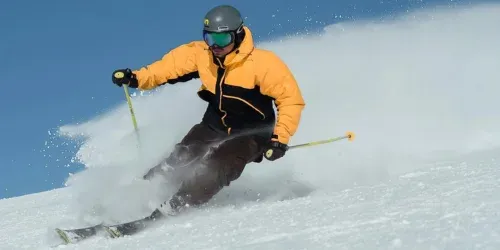
The Manufacturer's Code
In addition to the dimensions and length, you might find a series of letters and numbers that seem like a secret code. This is often the manufacturer's model number or name, which can provide additional information about the ski's intended use or the technology used in its design.
For example, a ski with "SL" in the model name might be designed for slalom racing, while "GS" indicates a giant slalom ski. These codes can be helpful when researching and comparing different skis.
Tailoring to Terrain: All-Mountain, Piste, and Powder
The numbers on skis can also hint at the terrain they're designed for. All-mountain skis are jack-of-all-trades, with dimensions that allow them to perform well in a variety of conditions. Piste skis are narrower for better grip and precision on groomed runs, while powder skis are wider to provide the necessary float.
When selecting a ski, consider the type of terrain you'll be skiing most often and choose a ski with the appropriate dimensions and length for that terrain.
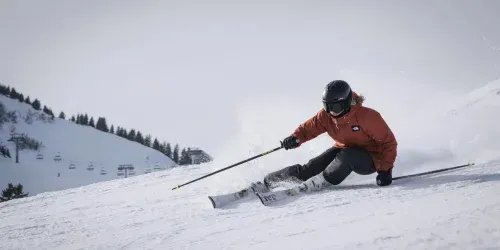
The Bottom Line: Matching Numbers to Your Skiing Style
Ultimately, the numbers on skis are a guide to help you find the right pair for your needs. By understanding what these numbers mean, you can make an informed decision and select skis that will complement your skiing style and ability level.
Whether you're a beginner looking for a forgiving ski to help you learn, an intermediate skier seeking versatility, or an expert chasing performance, the right numbers can lead you to the perfect skis for your adventures on the slopes.
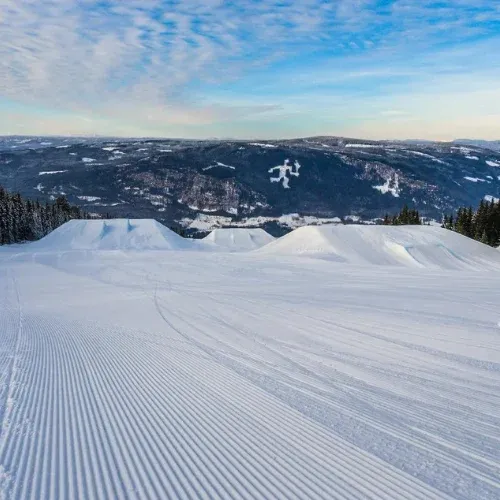
Summary
The numbers on skis are a critical piece of information that guides skiers in choosing the right equipment. They represent dimensions, length, turning radius, and sometimes the flex rating, all of which contribute to the ski's performance on the snow. By understanding these numbers, skiers can select skis that match their skill level, preferred terrain, and skiing style, ensuring a better and more enjoyable experience on the mountain.
FAQs
What do the three numbers on skis represent?
The three numbers on skis represent the dimensions of the ski's tip, waist, and tail in millimeters. They are crucial for determining the ski's performance characteristics, such as how it will handle turns and different snow conditions.
How does ski length affect performance?
Ski length affects stability, control, and maneuverability. Longer skis offer more stability at high speeds and are better for advanced skiers, while shorter skis are easier to turn and are often recommended for beginners or those who prefer a playful ride.
What does the turning radius number on skis indicate?
The turning radius number on skis indicates how tightly the ski can turn. A smaller turning radius is ideal for quick, sharp turns, while a larger turning radius is better for long, sweeping turns. This number helps skiers choose a ski that matches their preferred style of skiing.









